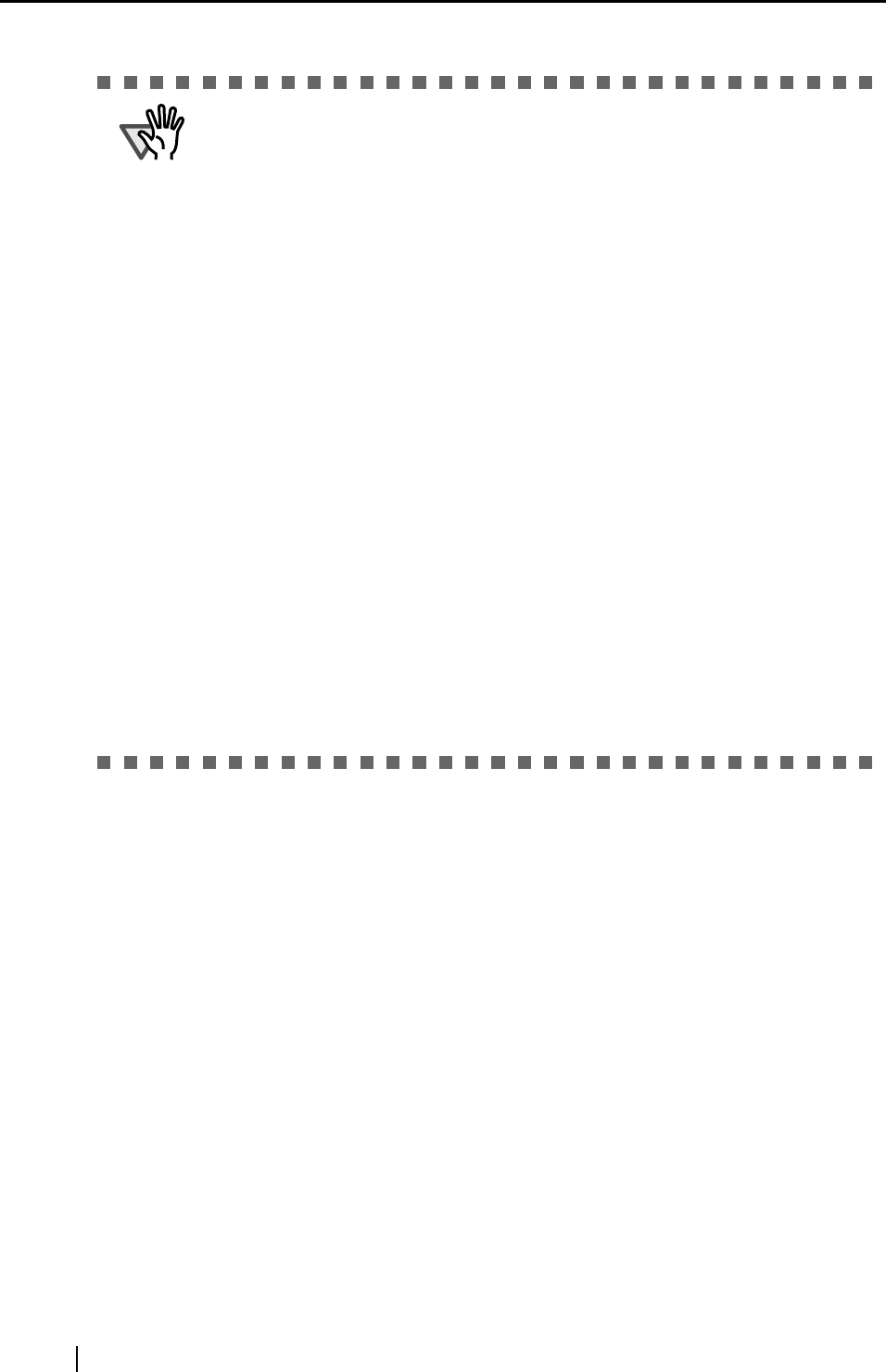
48
In addition, keep in mind the following points when you use the Carrier Sheet.
ATTENTION
• Use the Carrier Sheet only for the ScanSnap.
• Avoid writing letters on, coloring, staining, or cutting the portion striped in black
and white on the Carrier Sheet. Otherwise, the ScanSnap cannot scan the
document with the Carrier Sheet correctly.
• Load the Carrier Sheet one by one on the ScanSnap.
• Do not place the Carrier Sheet upside-down on the ScanSnap. Otherwise, a
paper jam may happen, or the Carrier Sheet may be damaged.
• Do not leave a document on the Carrier Sheet for an extended period of time.
The ink on the document may be transferred onto the Carrier Sheet.
• Do not leave the Carrier Sheet in locations that are exposed to elevated
temperatures; for example, locations exposed to direct sunlight or near a
heating apparatus, for an extended period of time. Do not use the Carrier
Sheet under high-temperature conditions. If used under such a condition, it
may be deformed.
• Do not bend or pull the Carrier Sheet by force.
• Do not use a damaged Carrier Sheet. Otherwise, the ScanSnap may be
damaged or may malfunction.
• To avoid the deformation of the Carrier Sheet, do not put anything heavy on it
and keep it on a level surface when not in use.
• Be careful not to cut your fingers touching the edge of the Carrier Sheet.
• Do not insert more than one small-size material such as the picture and post
card in the Carrier Sheet per scan. Otherwise, a paper jam may occur. It is
recommended small-size materials be scanned one-by-one.
• If a paper jam occurs frequently, feed about 50 sheets of PPC paper or
recycled paper, and then scan the document by using Carrier Sheet.
* You can use either unused or used PPC/recycled paper.


















